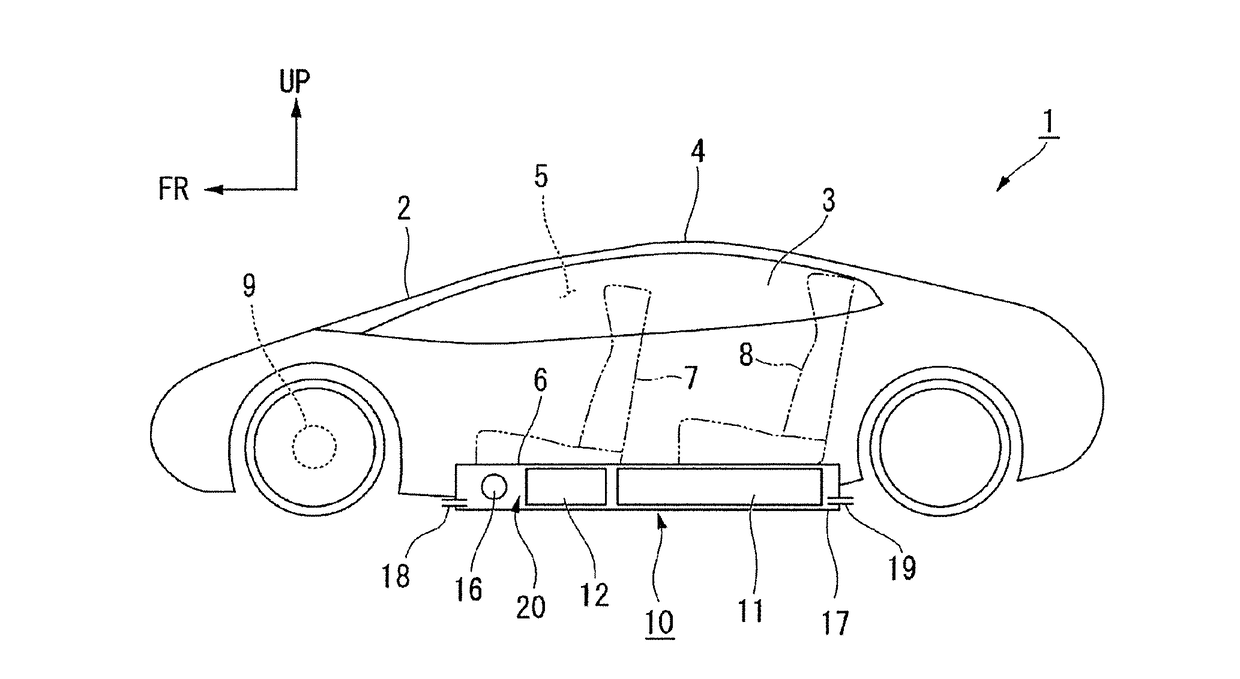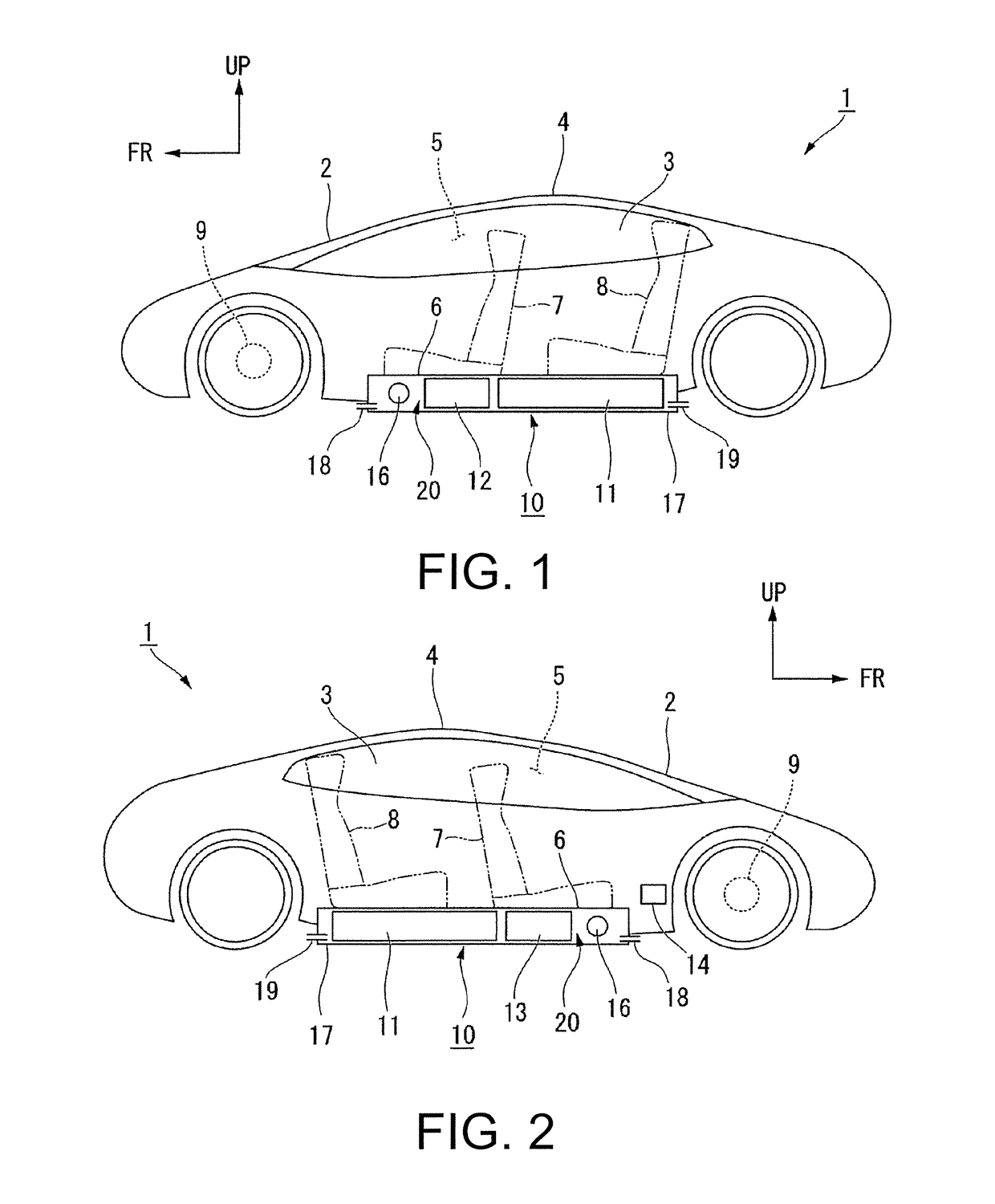Vehicle, battery unit and battery carrying method of vehicle
- Summary
- Abstract
- Description
- Claims
- Application Information
AI Technical Summary
Benefits of technology
Problems solved by technology
Method used
Image
Examples
first embodiment
[0037]As shown in FIG. 1, the vehicle 1 has a passenger compartment 5 encircled by a front window glass 2, left and right side window glass 3, and a roof 4. The vehicle 1 has a front seat 7 and a back seat 8 for passengers on a floor panel 6 and in the passenger compartment 5.
[0038]The vehicle 1 is an electric vehicle (EV), which has a motor (a driving element) 9 used for driving and a battery (a first power storage element 11 and a second power storage element 12). The motor 9 is driven by electric power of at least one of the first power storage element 11 and the second power storage element 12. Besides an alternating current (AC) motor or a direct current (DC) motor disposed in an engine room located at a front portion of the vehicle body, the motor 9 can also be an in wheel motor. Besides that the vehicle 1 is a battery type EV only using the energy of the battery to drive the motor 9, the vehicle 1 can also be a hybrid car using both of electricity and an engine (internal comb...
second embodiment
[0063]Then, the second embodiment of the invention is described below with reference of FIG. 5.
[0064]Compared to the first embodiment, a difference of a vehicle 30 and a battery unit 35 of the present embodiment is that an evaporator 31 is configured at the external gas inlet port 18. Other structures that are the same or similar to that of the aforementioned embodiment are denoted by the same reference numbers, and descriptions of the same technical contents are omitted.
[0065]The evaporator 31 is, for example, a heat exchanger using an air conditioning refrigerant of the vehicle 30 to cool the air, and is disposed in the frame 17 close to the back (a downstream side) of the external gas inlet port 18, and is disposed in front of (an upstream side) each of the power storage elements 11 and 12. In the example of FIG. 5, the fan 16 is disposed between the evaporator 31 and each of the power storage elements 11 and 12. Through the external gas inlet port 18, the external gas outlet por...
third embodiment
[0066]Then, the third embodiment of the invention is described below with reference of FIG. 6.
[0067]Compared to the first embodiment, a difference of a vehicle 40 and a battery unit 45 of the present embodiment is that the frame 17 has an indoor gas inlet port 41 and an indoor gas outlet port 42 opening towards the passenger compartment 5 to replace the external gas inlet port 18 and the external gas outlet port 19. Other structures that are the same or similar to that of the aforementioned embodiment are denoted by the same reference numbers, and descriptions of the same technical contents are omitted.
[0068]In the dame 17, the air in the passenger compartment 5 can be inlet from the indoor gas inlet port 41, and after the second power storage element 12 and the first power storage element 11 are sequentially cooled by the air, the air is exhausted to the passenger compartment 5 through the indoor gas outlet port 42. Through the indoor gas inlet port 41, the indoor gas outlet port 4...
PUM
 Login to View More
Login to View More Abstract
Description
Claims
Application Information
 Login to View More
Login to View More - R&D
- Intellectual Property
- Life Sciences
- Materials
- Tech Scout
- Unparalleled Data Quality
- Higher Quality Content
- 60% Fewer Hallucinations
Browse by: Latest US Patents, China's latest patents, Technical Efficacy Thesaurus, Application Domain, Technology Topic, Popular Technical Reports.
© 2025 PatSnap. All rights reserved.Legal|Privacy policy|Modern Slavery Act Transparency Statement|Sitemap|About US| Contact US: help@patsnap.com



